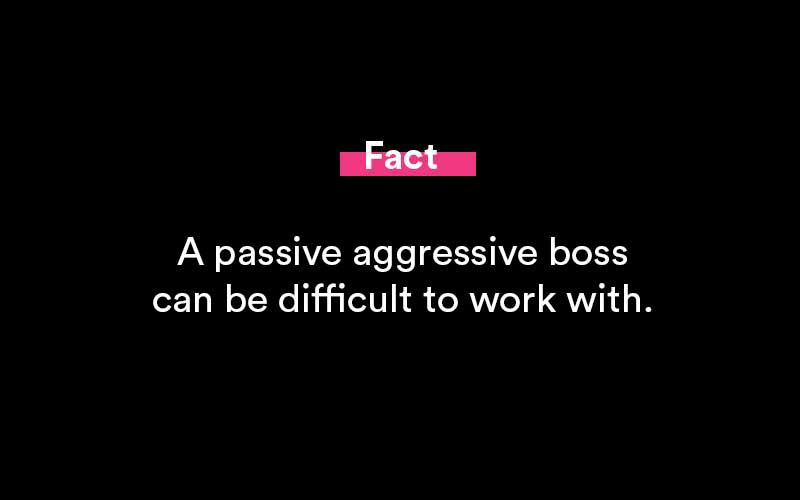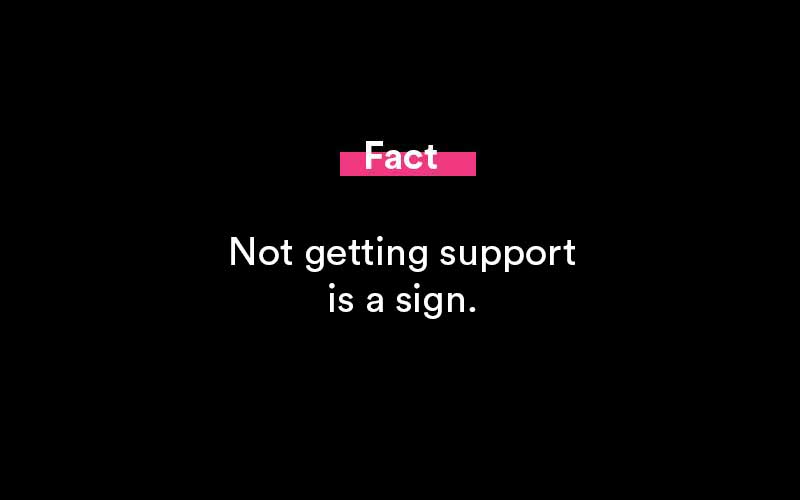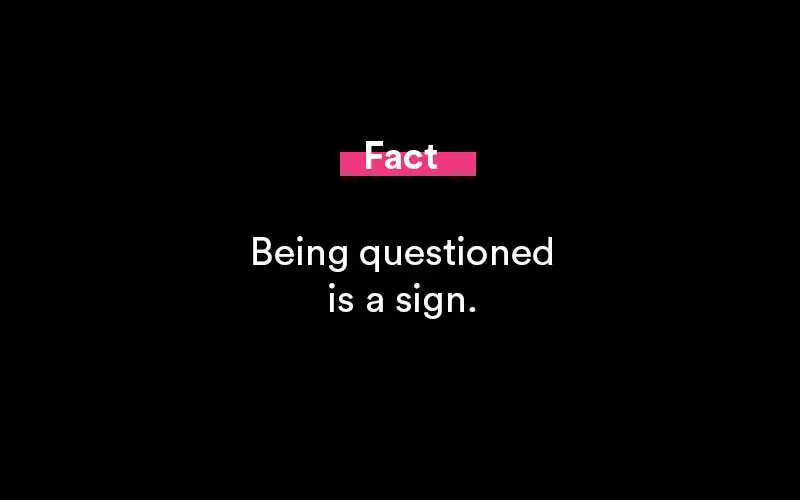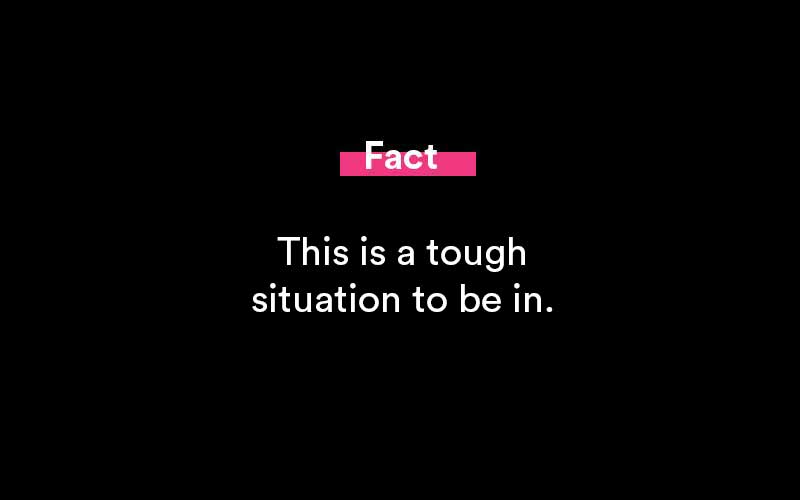Dealing With a Passive Aggressive Boss (Examples)
Here's how to deal with a passive-aggressive boss. Numerous leadership actions can have an effect on a work environment. Passive-aggressive leadership is a style of leadership that can stifle communication with employees and undermine employee morale, thus it's critical to understand how to work with people who exhibit this style. If you believe your work for a passive-aggressive boss, there are steps you may do to improve your relationship with them and foster a more positive work atmosphere.

What is the definition of passive-aggressive leadership?
Passive-aggressive leadership is a style of leadership that can have an adverse effect on the work environment. Leaders may engage in passive-aggressive behavior as a result of underlying fears and insecurities. Frequently, passive-aggressive leadership is defined by the following:
- Accusing others of errors
- Critiquing employees in an indirect manner
- Implementing superfluous or perplexing workplace rules
- Attempting to avoid developing relationships with staff
- Providing ambiguous feedback or recommendations without providing explanations
Frequently, passive-aggressive leaders do not conduct in this manner on purpose, and they may be willing to change their behavior. As a result, it is critical to learn how to work with individuals like this.
What is passive aggression?
Passive-aggressive behavior is a tendency of expressing negative emotions indirectly rather than explicitly. There is a discrepancy between what someone who engages in passive-aggressive behavior says and what they do.
For instance, someone who participates in passive-aggressive behavior may pretend to agree with another person's request – possibly even enthusiastically. Instead of complying with the request, he or she may demonstrate anger or contempt by neglecting to follow through or missing deadlines.
Passive-aggressive behaviors manifest in the following ways:
- Resentment and hostility to other people's demands, particularly those of those in positions of authority
- Reluctance to cooperate, procrastination, and deliberate errors in response to the requests of others
- Attitudes that are cynical, gloomy, or antagonistic
- Complaints about feeling unappreciated or cheated are frequent.
While passive-aggressive conduct may be a symptom of a variety of mental health disorders, it is not considered a unique mental illness. However, passive-aggressive behavior can sabotage relationships and create workplace challenges. If you or a loved one is battling with passive-aggressive behavior, try contacting a therapist.

What are the traits of passive aggressive people?
Passive aggression frequently entails the following:
- General anger: Bitterness, anger, or resentment toward others when they make demands a cynical, disagreeable, or stubborn attitude when you don't want to do anything a tendency to pout, sulk, or give others the quiet treatment when things don't go as planned a pattern of blaming others for issues.
- Complaining: Frequent complaints about being unappreciated, misunderstood, or tricked a proclivity for procrastination or forgetfulness about tasks you'd rather avoid the practice of voicing vague critiques addressed at no one in particular.

While it may take some time to establish that your employer or coworker is in fact a passive-aggressive person, once you have done so, you can rest assured that they rarely change.
How do passive-aggressive leaders behave?
Passive aggressive leaders often do the following:
- Set rules that don't make sense.
- Speak in codes.
- Are hyper-conforming.
- Doesn't take accountability.
- Has a scapegoat or scapegoating mentality.
A passive-aggressive boss may have given you the "cold shoulder" at times when you needed them. A passive-aggressive coworker will behave in the same ways. Often exhibition the "silent treatment" when they didn't get the reaction they were looking for.
How to deal with a boss that is passive-aggressive
Collaboration with passive-aggressive management can be made simpler with a game plan. Here are five critical steps you may take to properly cope with a passive-aggressive manager:

1. Recognize and classify passive-aggressive behavior
To deal with passive-aggressive management, the first step is to identify their passive-aggressive tendencies. By recognizing these habits, you can decide how to respond to them and prepare for your encounters with your management. You can check for important indicators of passive-aggressive behavior such as ambiguous comments and guidance, superfluous workplace rules, and transferring blame to employees. Consider particular times when your manager exhibited these types of behavior.
2. Each day, extend a kind greeting
Another critical aspect of coping with a passive-aggressive manager is greeting them each day politely. This can assist you in maintaining a positive relationship with them and in keeping them receptive to future interactions. It may even assist you in initiating contact with them. When you arrive at work, greet your management cordially and inform them of your departure at the end of the day.
3. Effective communication
Communicating effectively is crucial while working with a passive-aggressive management. When communicating with your manager, it is critical to retain your composure, control your emotions, and adhere to your principles. Additionally, you can enhance your conversation by:

- Asking questions
- When possible, having face-to-face conversations
- Avoiding personal criticism by providing constructive remarks
Whenever your boss issues instructions, ensure that you understand their expectations for your performance and responsibilities. Attempt to obtain written instructions from them in order to keep them accountable.

4. Maintain a log of interactions
After interacting with your manager, make a point of documenting all of your discussions. You can record your discussions and send follow-up emails to verify that you and your manager are on the same page regarding critical work initiatives and assignments. Confirm any critical information with your manager to ensure that you and your team are on the same page.
5. Inform them of your concerns
If required, you can inform your manager of your concerns about their actions. When speaking with them, make sure your feedback is constructive and that you communicate gently and respectfully. Ensure that your chat takes place in private and not in front of other employees. Additionally, you might inquire as to if there is an underlying issue and how you can assist them in resolving it.
While your manager may first deny responsibility for their behavior, raising your concerns can assist them in addressing their passive-aggressive behavior, thereby enhancing your work environment.
Tips on working with a passive-aggressive boss
Additional techniques for interacting with and working under a passive-aggressive management include the following:

Be considerate
Respect is one strategy for dealing with a passive-aggressive management. Even if you disagree with them, it is critical to engage with them in a respectful manner in order to have fruitful talks. You can demonstrate respect by responding politely to your management when you disagree with them and making an attempt to listen to what they have to say.
Exhibit empathy
Another critical suggestion is to demonstrate empathy. Empathy is the capacity to perceive things through the eyes of another person and to comprehend their emotions. Empathy is critical since it can aid in the comprehension of your management, as passive-aggressiveness is frequently a cover for underlying issues and feelings. Empathy abilities might help you communicate more effectively with your manager.

Engage in active listening
Additionally, active listening might assist you in enhancing your communication with your passive-aggressive management. This communication skill is critical for demonstrating that you're paying attention to another person and appreciate their input, and practicing it can help you have more fruitful talks with a passive-aggressive supervisor. Among the components of active listening are the following:
- Establishing eye contact
- Observing your body language
- Smiling
- Verbal feedback
- Maintain an air of professionalism
Another point to remember while dealing with a passive-aggressive management is to maintain a professional demeanor. Make an effort not to take their actions personally. Maintain a professional demeanor when communicating with them, and strive to keep business and personal life distinct. If your manager's passive-aggressive behavior persists, you can attempt to carry out your job tasks without their involvement, communicating with them only when you require their assistance or permission.

Be honest
You may encounter friction with a passive-aggressive manager, and you can utilize this as an opportunity to conduct meaningful dialogues. You can communicate your concerns to your management and allow them to explain their behavior. Having fruitful interactions with your manager will help you strengthen your bond with them.

How can I quickly identify passive-aggressive people?
Passive aggressive types and personalities primarily manifest themselves through hidden behavior, such as sarcasm, spiteful side comments, excuses for not doing anything, sulky or silent treatment, or seeming helpless.
Generally, there is negative energy associated with this working relationship. And they won't accept responsibility for any mistakes or errors in their work. In addition, the person will often have sarcastic comments aimed at you or your work.
Passive aggressive boss examples
Passive-aggression behaviors include sulking, backhanded compliments, procrastination, disengagement, and refusal to communicate. When the other person begins to act in this manner, try to contain your rage. Rather than that, state the other person's feelings in a non-judgmental yet factual manner.
Examples of a passive-aggressive boss in the workplace:
Example one
"John, thanks for doing the work that I asked you to do a few weeks ago. It's nice to know that we're getting work done in this environment."
Example two
"Mary, the work that you did was great. Although, I probably would have done it a completely different way. What are your job responsibilities again? I'm just curious about them because I thought we hired you to help with sales. And this seems like marketing work."

Popular Resources

Featured
35+ Phone Interview Questions & Best Sample Answers
Phone interviews have become a core part of the process when attempting to find a secured placement for an open position. Companies receive massive responses from potential candidates for any..

Featured
12+ Best Questions To Ask A Recruiter
Concerning a job search, you might receive numerous offers from your recruiters. Before you choose one, you need to assess all the conditions, for which it is vital that you know everything associated with the offered position..

Featured
Answering "What Makes You Unique" In A Job Interview
Answering this question during a job interview requires more than knowing why you are unique as an individual. Yes, the true scientific answer is made up of two main components: your..

Featured
250+ Ice Breaker Questions for Life
An ice breaker question is a question that’s asked from one person to another person in order to act as a conversation starter. It brings a connection...

Featured
10 Best Answers to "What Motivates You?"
Open-ended questions like “What motivates you?” can elicit a deer-in-the-headlights reaction from job candidates if they are unprepared. It’s a broad question and can leave the interviewer..

Featured
Answering "How Did You Hear About This Position" In An Interview
A lot of interviewers ask this question - how did you hear about this position? This way they can judge you if you are a passive or an active job seeker..

Featured
8 Best Thank You Emails After an Interview (Samples, Free Templates)
Writing a thank you note after an interview says a lot about you as a potential employee. Most notably, it says that you care about the opportunities presented..

Featured
Writing a Resignation Letter (How To Write It, Samples)
Writing the perfect letter of resignation is more of an art than it is a science. And we’re going to cover how to master that art form in this full guide..

Featured
How to End a Letter (Example Salutations, Sign Off's)
Knowing how to end a business note or email is an important skill to develop. It helps portray a sense of confidence, respect and tone to your message..
